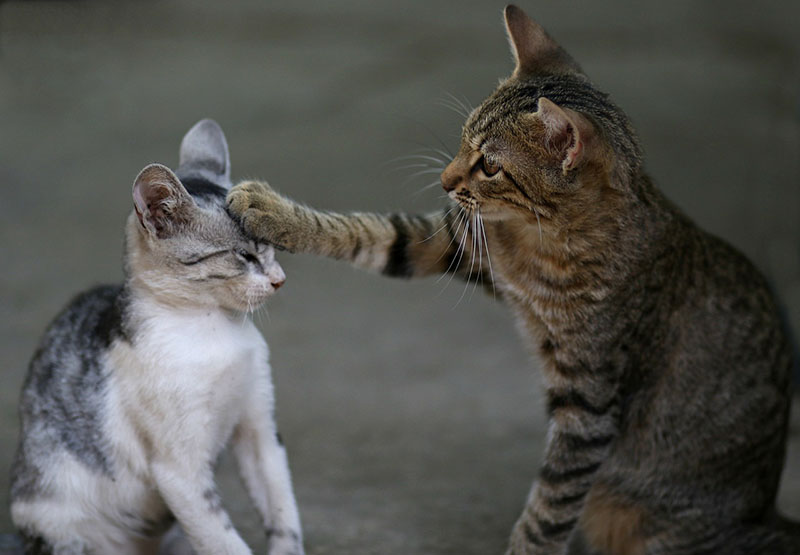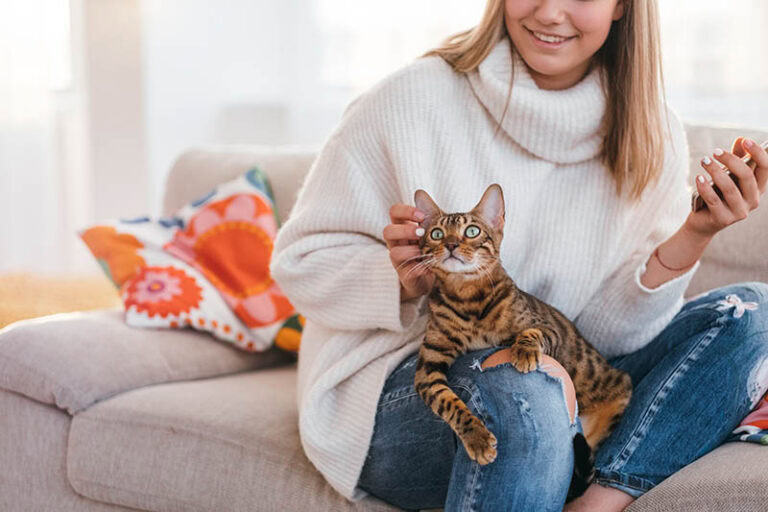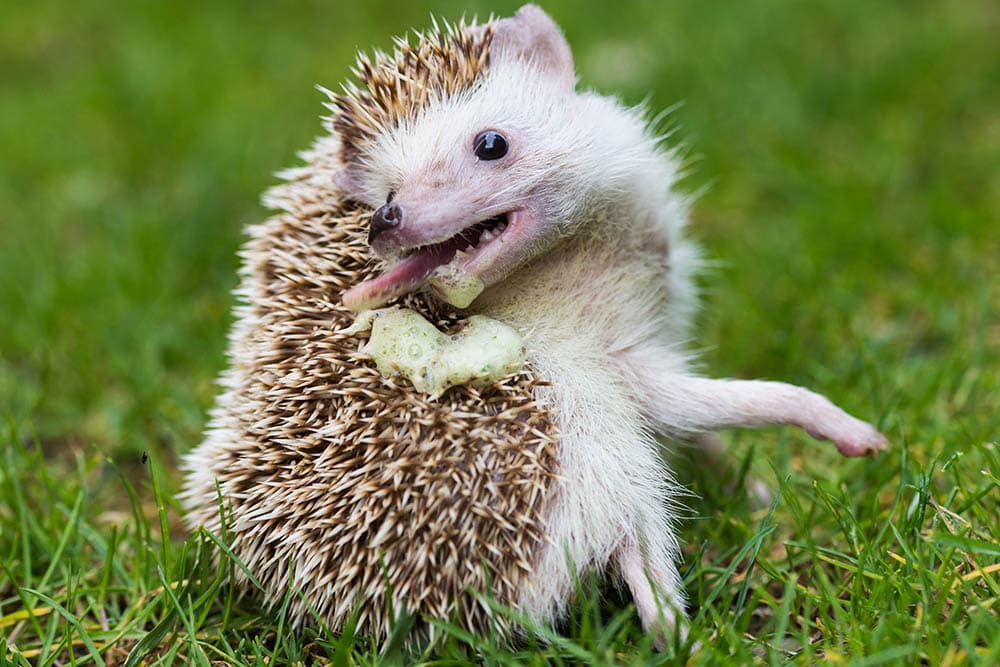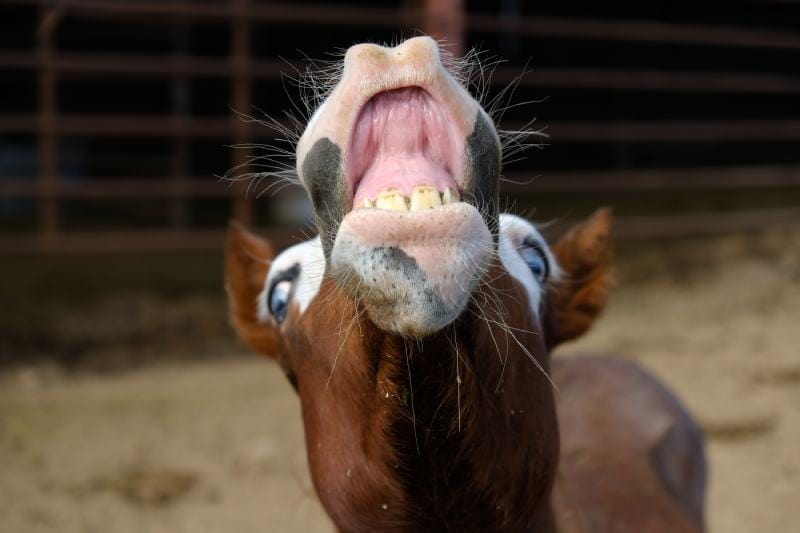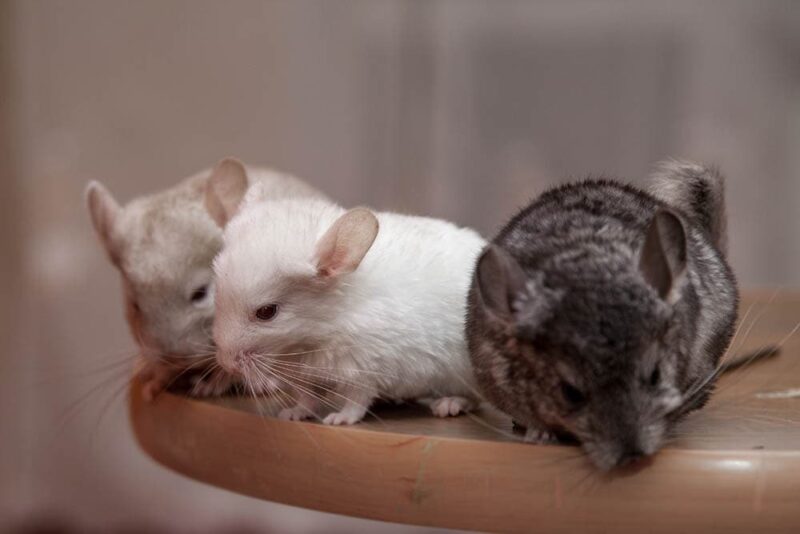VET APPROVED

The information is current and up-to-date in accordance with the latest veterinarian research.
Learn more »Click to Skip Ahead
Older cats and younger kittens benefit from playing. It enables them to develop, perfect, and practice essential skills, and it also allows them to burn off energy while providing mental stimulation.
If you have two or more cats, their playing together can help form a bond while keeping them both entertained. However, general play can turn rough, and you need to be able to recognize the difference between positive play and rough play. If you notice signs of aggression, use distractions like a call or noise, followed by the presentation of a toy, to get their attention away from one another before anything more serious happens.
Read on to determine when your cats are playing too rough and what steps you can take to stop it.

Why Cats Play
Cats enjoy both solitary play and social play. Solitary play is when a cat plays with items and toys. This includes those times when they find items around the house and throw and catch them, and also when they pounce on their toy mice. They might partake in solitary play to help hone their skills, relieve boredom, or burn off energy.
Social play occurs when a cat plays with another cat, another pet in the house, or with you or other humans. Although social play tends to start when cats are young, it can progress and continue as cats get older. Social playing can look like fighting. It can involve scratching, kicking, rolling around together, and possibly even some gentle biting.
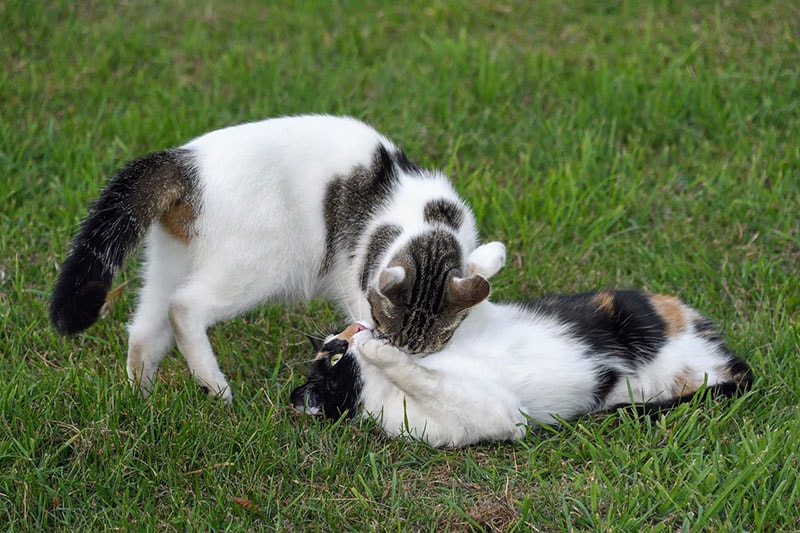
Signs That Playtime Got Too Rough
While playtime is natural for cats of all ages, and it can involve multiple cats of different ages, there may come a point where playing turns to fighting. There are several signs to watch for that might indicate that play has turned into rough aggression.
Cats cannot speak, but their body language can tell us a lot about a situation and how they are feeling. Pay particular attention to your cat’s ears. If a cat’s ears are upright or pointing forward, likely, that the cat is still playing and not being aggressive. If the ears are back, this can be a sign of more serious fighting.
The tail is another good indicator. A wagging or swishing tail does not necessarily indicate that a fight is getting serious. But if the tail is puffed up, that is a sign of fear or aggression.
Also, look at how the cats are interacting with one another. In most play instances, cats will take turns to be “the aggressor,” so one of your cats will be on top before they swap positions and the top cat is now on the bottom. If one cat continues to be on top, this may be a sign of dominance. During healthy social play, cats will generally take turns, and there will be no growling, hissing, yowling, or blood. If you notice any precursor signs that play is turning into something else, it’s time to intervene.
How to Stop It
Direct intervention isn’t the best solution if your cats are getting rough. It can heighten tension between the pair and may lead to greater problems further down the line. Do not get in between cats that are fighting and do not pick one up to drag it away.
Instead, you need to try and drag their attention away from the situation before it further escalates. Call them or make a noise, such as a clapping sound, and use a cat toy, like a toy wand, that will get their attention. Encourage them to play with different toys, trying to direct them towards opposite directions rather than fighting, and let the tension diffuse. Laser pointers are usually a great way to achieve this.

How to Encourage Positive Play
There are several possible causes of rough play. Keep in mind that kittens usually have more energy than older cats, so you will need to spend plenty of time playing with them every day. Try to offer at least 3–5 minute bursts of interactive play a few times a day. Make sure they move around before each meal.
Likewise, ensure your older cat has a “safe space” to retreat to when they do not wish to interact with a rambunctious kitten. A high perch, a separate room, or even a covered cat bed where the kitten has no access will allow them to chill out away from the commotion of the youngster.
During interactions between the older cat and kitten, engage in three-way social play, and take on the role of play coach. Use a gentle interruption with a clap if they get too feisty. Use wand toys and laser pointers to redirect the kitten’s energy and prevent it from chasing the older cat. This provides a healthy outlet for the kitten’s playfulness while protecting the older cat from unwanted attention. Remember that kittens may not always recognize boundaries, so your guidance and interactive play are crucial for positive socialization. Never allow your kitten to bite your feet or hands; use the toys instead.
Remember to reward peaceful and respectful interactions. This is the only way a kitten can learn what is okay and has positive outcomes, as opposed to what is unacceptable behavior that might end up with physical pain or a damaged bond.
What to Do If the Situation Has Already Escalated
If the situation has gotten really bad and the cats can’t be in the same room as one another for any period, you may need to separate them and try reintroducing them in the same way you did when you brought the new cat into the house.
Have them on opposite sides of a closed door so they can get used to one another’s smell. When they calmly sense the other cat’s presence, you can start gradual introductions. Ensure early visits are supervised and only allow them in the same room together when you are confident that they are comfortable with each other’s company.
Regular play sessions can help your cat stay happy and healthy. Why not start the play with a fun toy like Hepper's Catnip Stick Toy? These sturdy toys are double-bagged, bite-proof, and filled with 100% organic catnip. Choose your favorite pastel color and treat your cat to hours of fun!
- No Filler - Like all the best cat toys our is stuffed with 100% organic catnip. Cheap cat toys with...
- Flexible Play - Simple plush shape is great for biting, scratching and pawing. It can start life as...
- Durably Designed - Our cat safe toys are hand-stitched with a double-lined exterior construction for...
At PangoVet, we've admired Hepper for many years, and decided to take a controlling ownership interest so that we could benefit from the outstanding designs of this cool cat company!

Conclusion
Cats play together frequently, and unless this turns to aggressive play, it is natural and beneficial for the cats involved. However, such playtime can get serious and may turn aggressive.
Consider the context and how the cats interact when they’re not fighting and look at their body language when they are. This will help determine whether they are still playing and will enable you to decide when they have started fighting. Don’t directly intervene but use a toy wand or another toy and get their attention away from one another. Don’t forget to offer the older cat a safe space and reward calm and positive interactions whenever they are playing nicely.
Featured Image Credit: Dina Voicu, Pixabay
